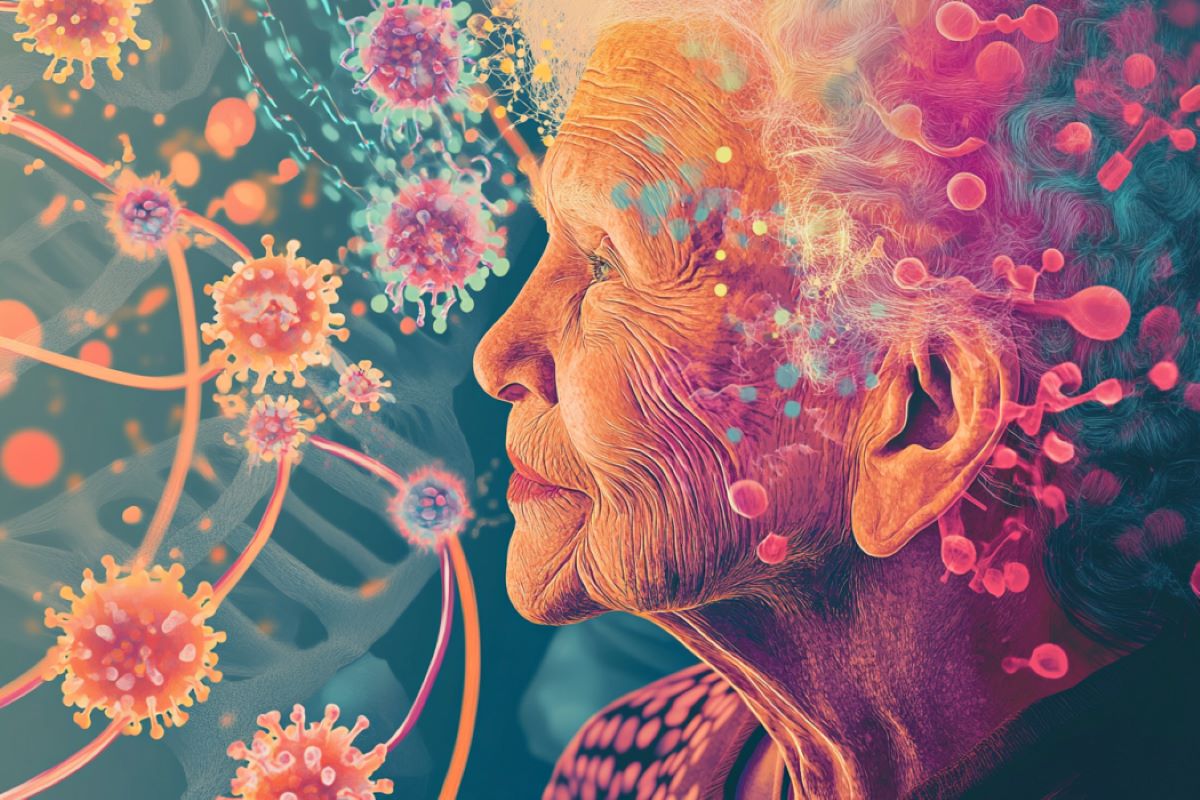Summary: Certain gut bacteria may play crucial roles in aging, with implications for promoting healthier aging. Research conducted on over 200 octogenarians found a decline in key bacteria, such as Faecalibacterium prausnitzii, and a compensatory increase in other species that help maintain gut health.
These changes impact inflammation, blood sugar, and vitamin levels, suggesting gut bacteria as potential markers for aging. Researchers are now investigating whether these bacterial shifts could be harnessed for therapeutic formulations aimed at enhancing health in aging populations.
Key Facts:
- Gut diversity decreases with age, impacting critical functions for gut health.
- Loss of Faecalibacterium prausnitzii prompts an increase in other butyrate-producing bacteria, supporting gut health.
- Some bacteria correlate with key health markers, like blood sugar and vitamin levels, making them potential indicators of healthy aging.
Source: ASTAR
A new study has revealed that gut bacteria may play a key role in aging, and that specific microbes could be targeted to promote healthy aging.
The Nature Communications study was conducted by scientists from the Agency for Science, Technology and Research Genome Institute of Singapore (A*STAR GIS), in collaboration with researchers from the A*STAR Singapore Immunology Network (A*STAR SIgN), A*STAR Institute for Human Development and Potential (A*STAR IHDP) and the National University of Singapore (NUS).
Aging is a complex, multi-factorial phenomenon with progressive decline in several physiological functions. As Singapore faces a rapidly growing aging population, researchers are seeking ways to understand the aging process and identify key lifestyle and dietary factors to encourage healthy aging.
As part of this effort, the team conducted the first large-scale study on over 200 octogenarians (people aged 80 – 89) in Singapore.
Their investigation revealed how the gut microbiome changes with age, highlighting key microbial species associated with aging, and their potential effects on health.
Using advanced DNA sequencing, the research team discovered a significant decrease in gut bacterial diversity as individuals age.
A particularly noteworthy finding was the decline of Faecalibacterium prausnitzii, a crucial bacterium responsible for producing butyrate—an essential short-chain fatty acid that maintains gut health, reduces inflammation, supports gut barrier function, and facilitates gut-brain communication.
Researchers observed an increase in Alistipes and Bacteroides species, with Alistipes utilising alternative substrates from Bacteroides to generate butyrate.
This notable switch may compensate for the reduction of F. prausnitzii, enhancing the metabolic capacity of the elderly gut to produce butyrate and promoting healthier aging.
The team then turned to preclinical models of healthy aging to validate their findings from the human cohort.
Despite differences in the microbes present in different host species, the researchers made a surprising discovery that they had remarkably similar functional enrichments, particularly in pathways related to butyrate production.
This indicates that although the specific microbes may differ across species, the functional roles they play in fostering healthy aging may be similar.
Additionally, the research team examined the association between gut bacterial changes and health markers such as inflammation, blood sugar and vitamin levels.
They identified Parabacteroides goldsteinii, a promising probiotic species associated with fasting blood glucose levels, as well as key gut species like Streptococcus parasanguinis and Bacteroides coprocola, which were linked to serum Vitamin B12 levels, suggesting that these bacteria may serve as indicators for monitoring healthy aging.
Recognising the potential of these associations, the researchers envisaged the development of non-invasive tests for frailty based on gut bacteria analysis.
In the next phase of their research, the team plans to further investigate the identified microbial strains and their metabolic pathways. By using preclinical testing, they aim to explore how these findings can be potentially translated into formulations that promote healthy aging.
Aarthi Ravikrishnan, the lead scientist of the study from A*STAR GIS, commented, “Our research offers key insights into the unique aspects of the gut microbiome and the metabolic shifts associated with aging.
“This study opens exciting new avenues for exploring the biology of aging, with a particular focus on populations in Asia.”
Associate Professor Niranjan Nagarajan, Associate Director, Genome Architecture, and Senior Group Leader, Laboratory of Metagenomic Technologies and Microbial Systems at A*STAR GIS, added, “Our findings lay the groundwork for future research aimed at developing targeted probiotic and prebiotic therapies to enable healthy aging through gut microbiome modulation.”
Dr Wan Yue, Executive Director at A*STAR GIS, commented, “This study has unveiled a better understanding and characterization of the gut microbiome in our local aging population and the potential biomarkers or probiotics unique to the Asian population that can improve healthy aging and to identify individuals at risk for aging-associated diseases.
“This can serve as a useful marker for early detection of diseases and interventions, improving patient prognosis.”
About this microbiome and aging research news
Author: Shu Chian Tay
Source: ASTAR
Contact: Shu Chian Tay – ASTAR
Image: The image is credited to Neuroscience News
Original Research: Open access.
“Gut metagenomes of Asian octogenarians reveal metabolic potential expansion and distinct microbial species associated with aging phenotypes” by Aarthi Ravikrishnan et al. Nature Communications
Abstract
Gut metagenomes of Asian octogenarians reveal metabolic potential expansion and distinct microbial species associated with aging phenotypes
While rapid demographic changes in Asia are driving the incidence of chronic aging-related diseases, the limited availability of high-quality in vivo data hampers our ability to understand complex multi-factorial contributions, including gut microbial, to healthy aging.
Leveraging a well-phenotyped cohort of community-living octogenarians in Singapore, we used deep shotgun-metagenomic sequencing for high-resolution taxonomic and functional characterization of their gut microbiomes (n = 234).
Joint species-level analysis with other Asian cohorts identified distinct age-associated shifts characterized by reduction in microbial richness, and specific Alistipes and Bacteroides species enrichment (e.g., Alistipes shahii and Bacteroides xylanisolvens).
Functional analysis confirmed these changes correspond to metabolic potential expansion in aging towards alternate pathways synthesizing and utilizing amino-acid precursors, vis-à-vis dominant microbial guilds producing butyrate in gut from pyruvate (e.g., Faecalibacterium prausnitzii, Roseburia inulinivorans).
Extending these observations to key clinical markers helped identify >10 robust microbial associations to inflammation, cardiometabolic and liver health, including potential probiotic species (e.g., Parabacteroides goldsteinii) and pathobionts (e.g., Klebsiella pneumoniae), highlighting the microbiome’s role as biomarkers and potential targets for promoting healthy aging.







